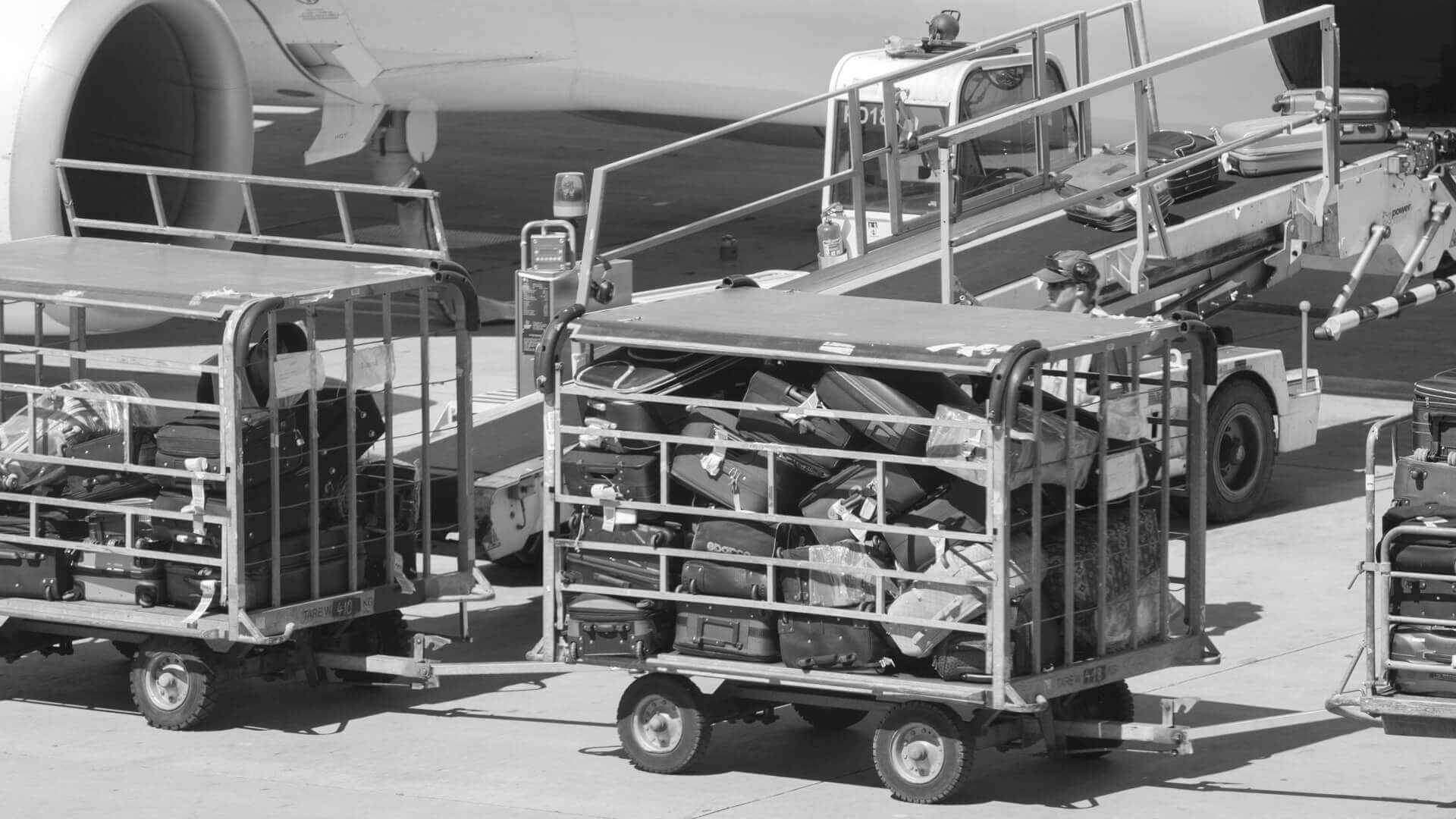Got baggage? Travelers know that checked baggage is a huge problem. The more you have the more it will cost. Worse, the lower the chances are that you will receive them at your destination.
Let’s review what is happening in airline travel and baggage handling.
For years, the airlines relied on bar codes to read bag tags and send them on their way through the conveyor systems and trust that they get to the gate on the right plane at the right time.
This was true for most of the last half of the twentieth century. Advances in bar coding helped.
Mishandled baggage, however, became an increasing problem but the airlines stood fast to their old ways. The volume of bags to be managed climbed into the tens of millions per year per airline. The volume of mishandled bags climbed into the tens of thousands in the U.S. Yes, customers grumbled, but the airlines believed strongly that customers would also switch airlines if there were just a few dollars difference in ticket price.
And so it was to be.
Then Came 9-11 and The Aftermath
The TSA/FAA mandated certain changes that would change our habits at the airport and beyond. Massive changes to baggage handling required Explosive Detection and Screening (EDS) before conveyance to planes. This would complicate time, tracking and travel of baggage.
Still the airlines focused on adding more bar code readers at more points in the journey of a bag.
Airline execs insisted they would lose customers if they added even $.10 to the cost of a ticket. Senior executives were adamant that they would not ask customers to pay an additional $.50 or $1.00 to pay for advanced Radio Frequency Identification (RFID) technology to track bags and ensure no lost bags.
Some execs even laughed when they related that the only time they absolutely knew where a bag was at any point in the trip was when the customer gave them the bag at the counter and when they picked it up at the intended destination.
Otherwise, they kept their fingers crossed.
Then things changed. Slowly the airlines started charging for bags during the great recession. The airlines were bleeding and needed revenue. The charges became a major source of income at a badly needed time in the industry. Rapidly, the success of implementing bag fees was soon delivering hundreds of millions of dollars in new revenue.
As important, if a customer is paying $50 or $100 for bags, they had better be at the destination on time!
More concern developed about baggage handling operations and visibility with the baggage handling system. However, the fact remained that the airports in the U.S. generally rented space to the airline. The airport had no or little control over each airline’s baggage handling system. The airport was simply a landlord. The airlines continued to grin and bear the operational issues and customer complaints.
A Pioneer in Aviation
A pioneer airport in the U.S. decided to work with the TSA to install an advance baggage tracking system using new controls and RFID chips in bag tags. The tags would be printed at the ticket counter and read at key points in the conveyor system. Accuracy was 99%+ and the audit trail was used to show that every bag would be screened, bomb-free images saved, and bags directed to the right plane.
McCarran International Airport in Las Vegas (LAS) would take the gamble and step up its game to provide accurate visibility of all bags all the time – over 25 million bags a year at minimum. They did it by teaming with the airlines (the airport controls the conveyor systems), TSA, RFID technology hardware and software providers, printer manufacturers and paper tag suppliers. They also are active with the International Air Transport Association (IATA) and Airports Council International (ACI), providing progress reports and results.
In other words, of all the airports in the world, McCarran took the challenge and installed a system that for over 10 years has served them very well.
They proved the efficiency, reliability and accuracy of the wireless passive, UHF RFID bag tag and track System.
Immediately after, Hong Kong International Airport (HKIA) installed the same technology and again, for more than ten years it has proven its capability for improving not only visibility, security of bags, but for operations to ensure delivery of the right bags to the right planes, especially for tail-to-tail transfers when bags had the most mishaps. Again, volumes exceeded 25 million tagged bags a year.
These two airports know who’s holding your bag at any one moment.
Today, given the motivations of customer satisfaction, security, traceability, and IATA compliance, there are lots of reasons to seek advice on what to do and how to do it with the least risk and best, proven technology.
Future Articles:
- Delta Airlines Makes a Huge Step Forward with RFID
- RFID in Airline Operations: How, What, and Where
- Wireless Tracking of Aviation Assets: Airside & Landside
- Wireless Solutions for Cargo Management – Including ULDs
Credit (Article): John Shoemaker
Credit (Photo): Petr Kratochvil





* ALL COMMENTS ARE MODERATED BEFORE PUBLICATION *